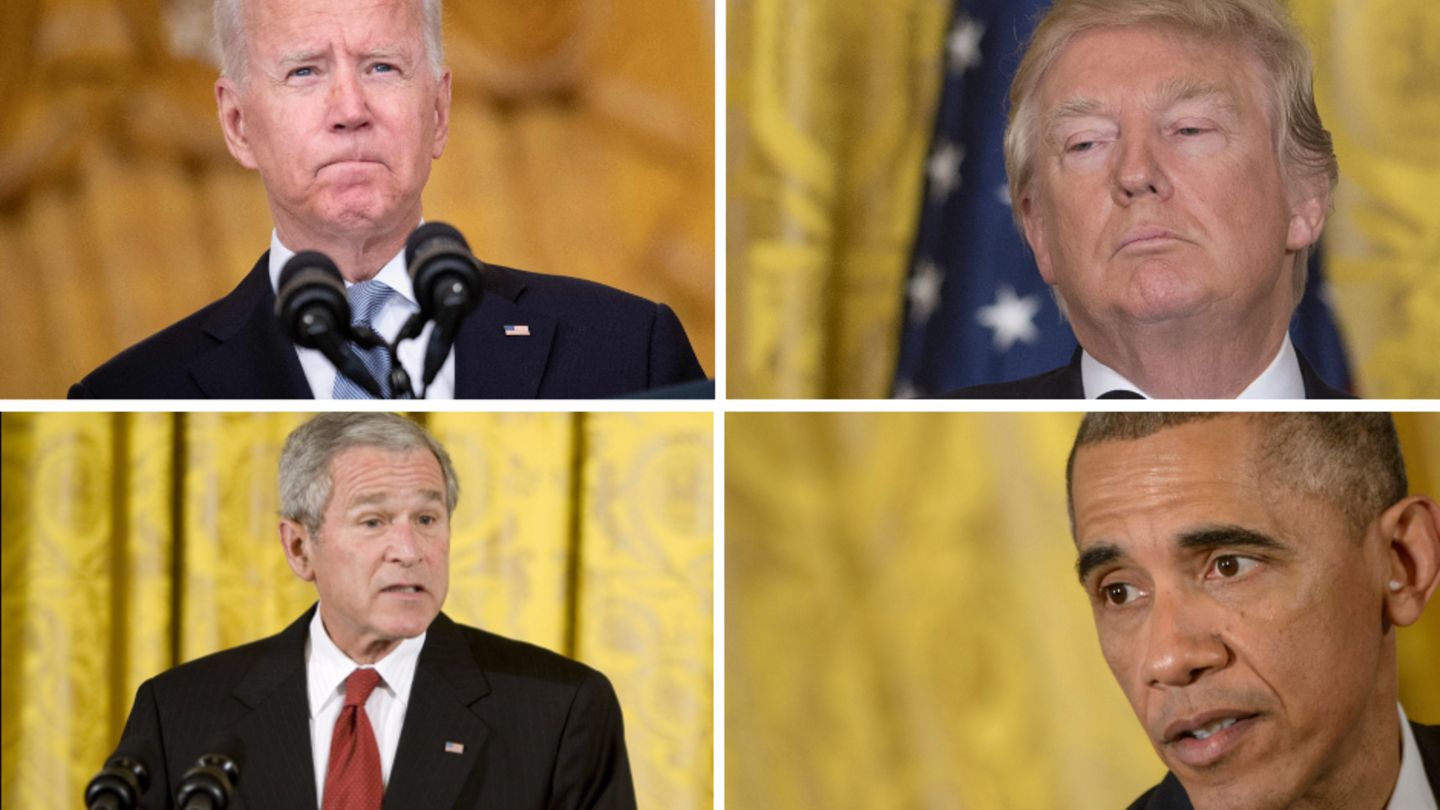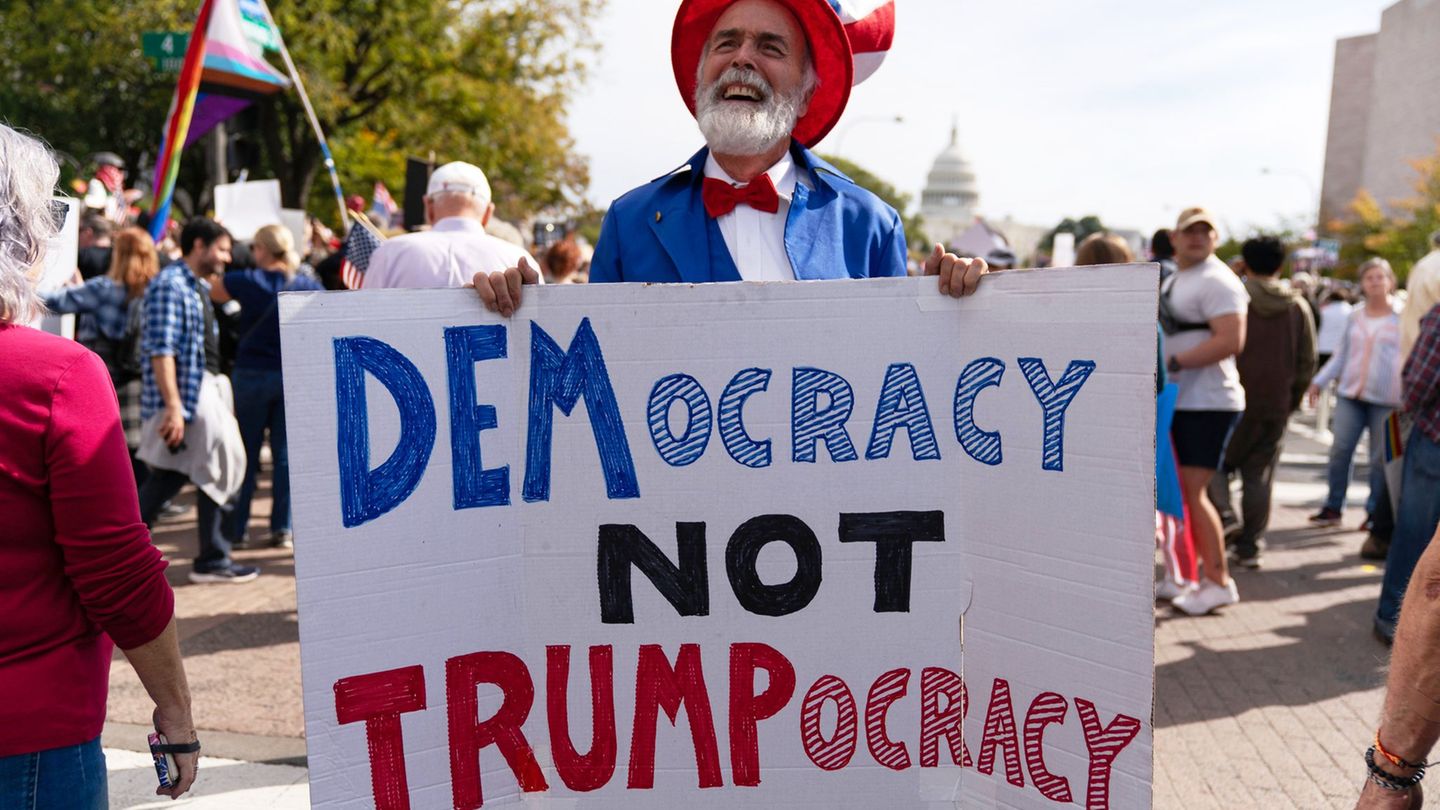US President Bush saw Afghanistan as the first victory in the war on terror. Now the international mission has failed. Critics blame US President Joe Biden for this. What responsibility do his predecessors have?
US President Joe Biden likes to show his empathy, but when it comes to Afghanistan, he hardly shows any sympathy. That the country is sliding into chaos, that the Taliban are back in power, that desperate Afghans are pleading for help – none of this makes Biden doubt his decision to withdraw troops. “I fully support my decision,” he says when addressing his compatriots in the White House. “The events we are witnessing now are sad evidence that no military power, however great, will ever create a stable, united and secure Afghanistan.”
Afghanistan: “many missteps”, “total disaster”
The US president admits “many missteps” in the past two decades of operation. From his critics’ point of view, the most serious mistake was the Democrat’s unilateral withdrawal decision – the senior Republican in the US Senate, Mitch McConnell, speaks of a “total disaster”. The disaster in Afghanistan was due to a number of factors – and not just because of the Americans. Biden’s three predecessors in the White House also made decisions that, in retrospect, turned out to be questionable or wrong. A selection:
- George W. Bush (2001 to 2009): After the terrorist attacks of September 11, 2001, the Republican ordered the US-led operation in Afghanistan. The Taliban regime – which al-Qaeda chief Osama bin Laden did not want to extradite – fell soon afterwards. The Islamists seemed defeated, and the foreign troops were celebrated as liberators in many places. Bush said in June 2004: “Coalition forces, including many brave Afghans, have given America, Afghanistan and the world their first victory in the war on terror.”
The false optimism of victory in Afghanistan turned attention away from the country. Meanwhile, the Taliban were able to regroup undisturbed in neighboring Pakistan and regain a foothold in Afghanistan. Particularly devastating: From March 2003, the US focused on its invasion of Iraq. Resources and troops that would have been needed in Afghanistan were instead sent to Iraq. While the security situation in Afghanistan worsened again, the troop governments practiced to gloss over the situation in front of the voters.
- Barack Obama (2009 to 2017): Because of the increasingly tense security situation, Obama initially strengthened the US troops significantly. In June 2011 – shortly after the killing of bin Laden – the Democrat then presented a roadmap for a gradual withdrawal of the American soldiers and for an end to the combat mission. “Our mission will change from combat to support,” said Obama. “In 2014 this transition process will be completed and Afghans will be responsible for their own security.”
At the time, a German officer in Kabul tried to make a comparison with the fire brigade, which ultimately did not announce in advance when a mission would end – but only moved away when the fire had been extinguished. In Afghanistan, Obama’s words raised serious doubts about the truth of NATO’s promise to stay as long as it is needed. The Taliban interpreted Obama’s words as a signal that they just had to persevere in order to achieve their goal. Even if the poor security situation repeatedly delayed Obama’s withdrawal plans: In the end, the Taliban should be proved right.
- Donald Trump (2017 bis 2021): The withdrawal from Afghanistan was a declared goal of Trump. Shortly before the anniversary of the September 11, 2001 attacks, the Republican planned to hold a secret meeting with the Taliban in 2019 at the president’s country estate in Camp David. After a serious Taliban attack in Kabul, Trump canceled the meeting. In February of last year, however, his government concluded an agreement with the Taliban in Doha that provided for the withdrawal of US troops by May 1, 2021.
In return, the Taliban committed, among other things, to peace negotiations with the government in Kabul, which should lead to a permanent ceasefire and a political roadmap for the future of Afghanistan. Although the Taliban did not adhere to the agreement, Trump reduced the number of US troops in Afghanistan to 2,500 in the last days of his tenure Government at the urging of the Taliban was not even involved.
- Joe Biden (since January 2021): Even as Obama’s Vice President, Biden was an opponent of the Afghanistan mission. After moving into the White House, he pondered what to do next for months. Shortly before the expiry of the deadline in the Doha Agreement, he announced his decision in April: The US would withdraw its troops completely from Afghanistan by September 11, 2021 – the 20th anniversary of the terrorist attacks – at the latest, unconditionally. NATO allies like Germany wanted to deduct from successes in peace negotiations. US experts also advised against an unconditional withdrawal.
In July, the Democrat announced that the operation would end at the end of August. The Taliban, however, were faster. Biden’s promise to continue to support the Afghan government after the troops withdrew has been a thing of the past since she actually came to power. “I know that my decision will be criticized,” said Biden in his most recent address. “But I’d rather take all this criticism than pass this decision on to another President of the United States.”
David William is a talented author who has made a name for himself in the world of writing. He is a professional author who writes on a wide range of topics, from general interest to opinion news. David is currently working as a writer at 24 hours worlds where he brings his unique perspective and in-depth research to his articles, making them both informative and engaging.




